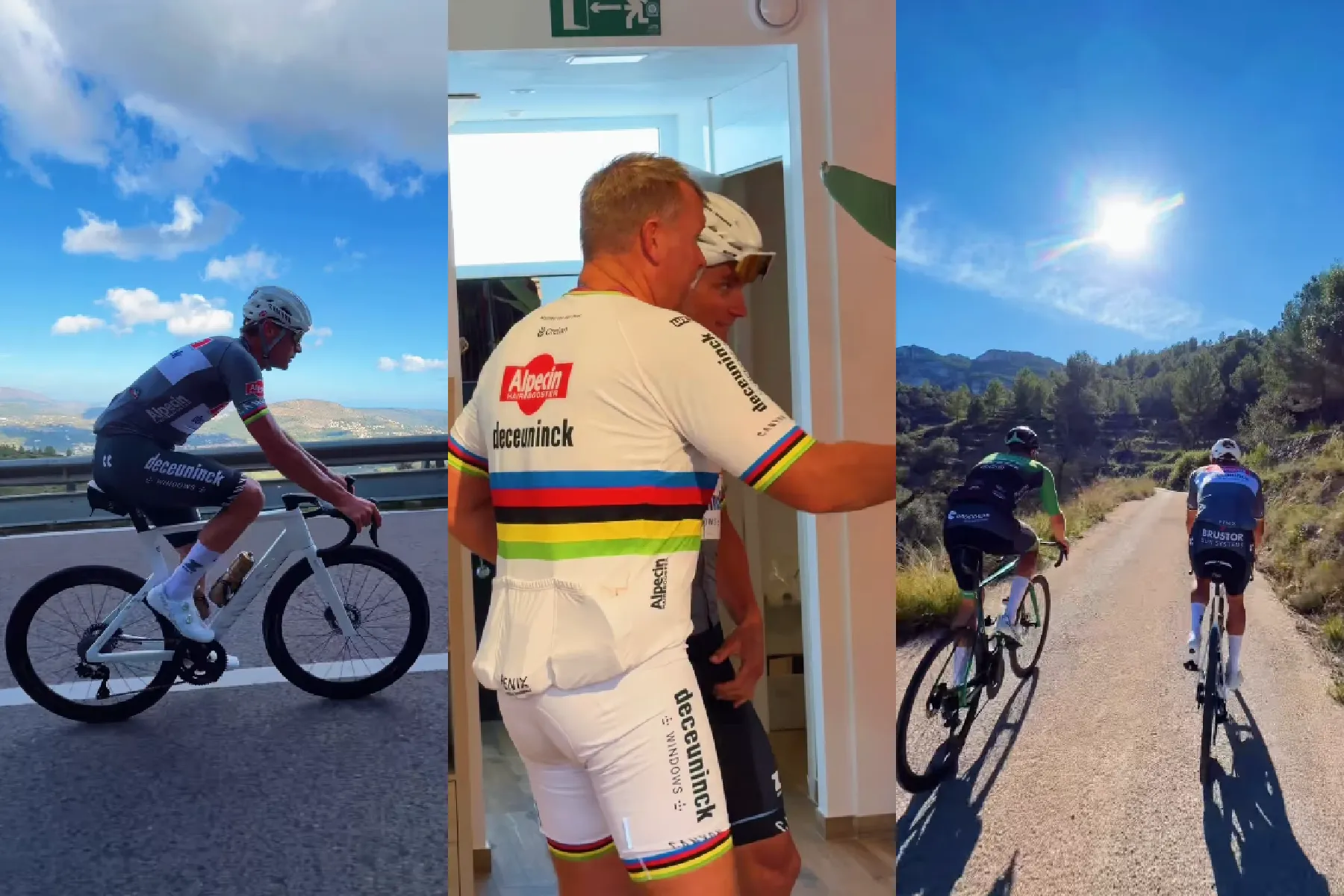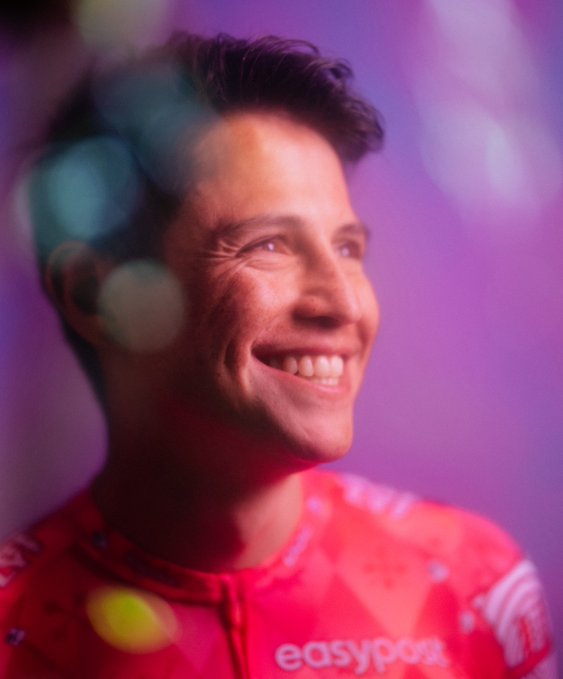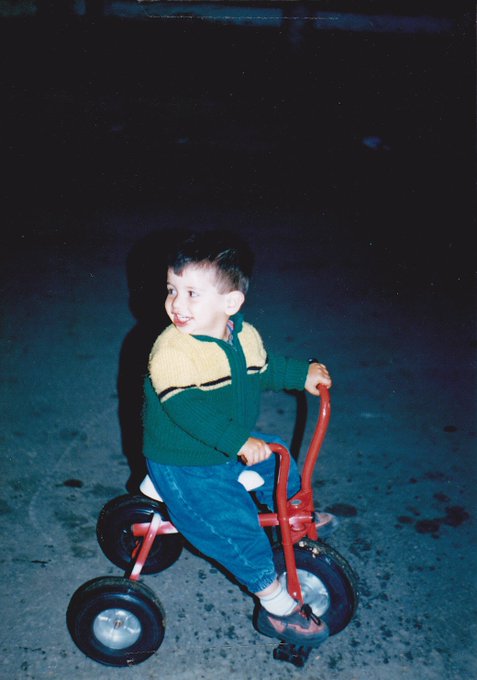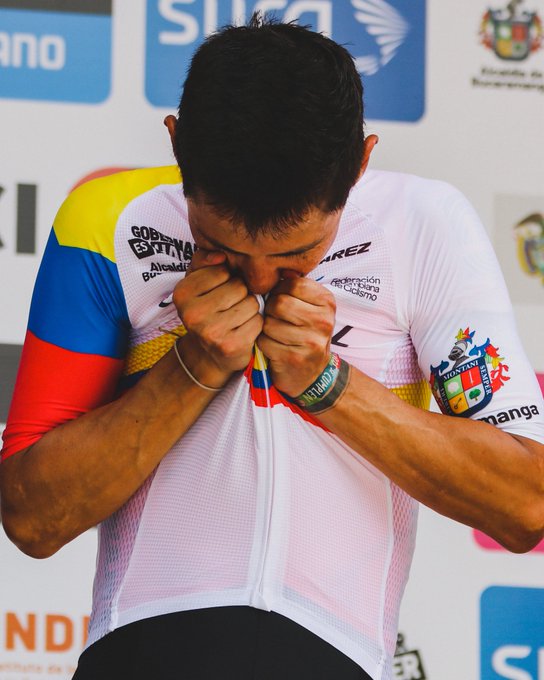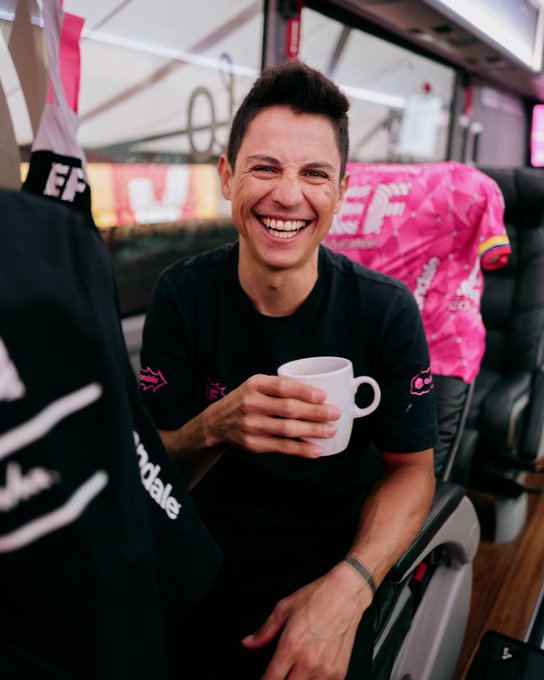The incredible climbing star who could follow Nibali after Kruijswijk’s crash—but later hit his own limits
CyclingMonday, 24 November 2025 at 18:45
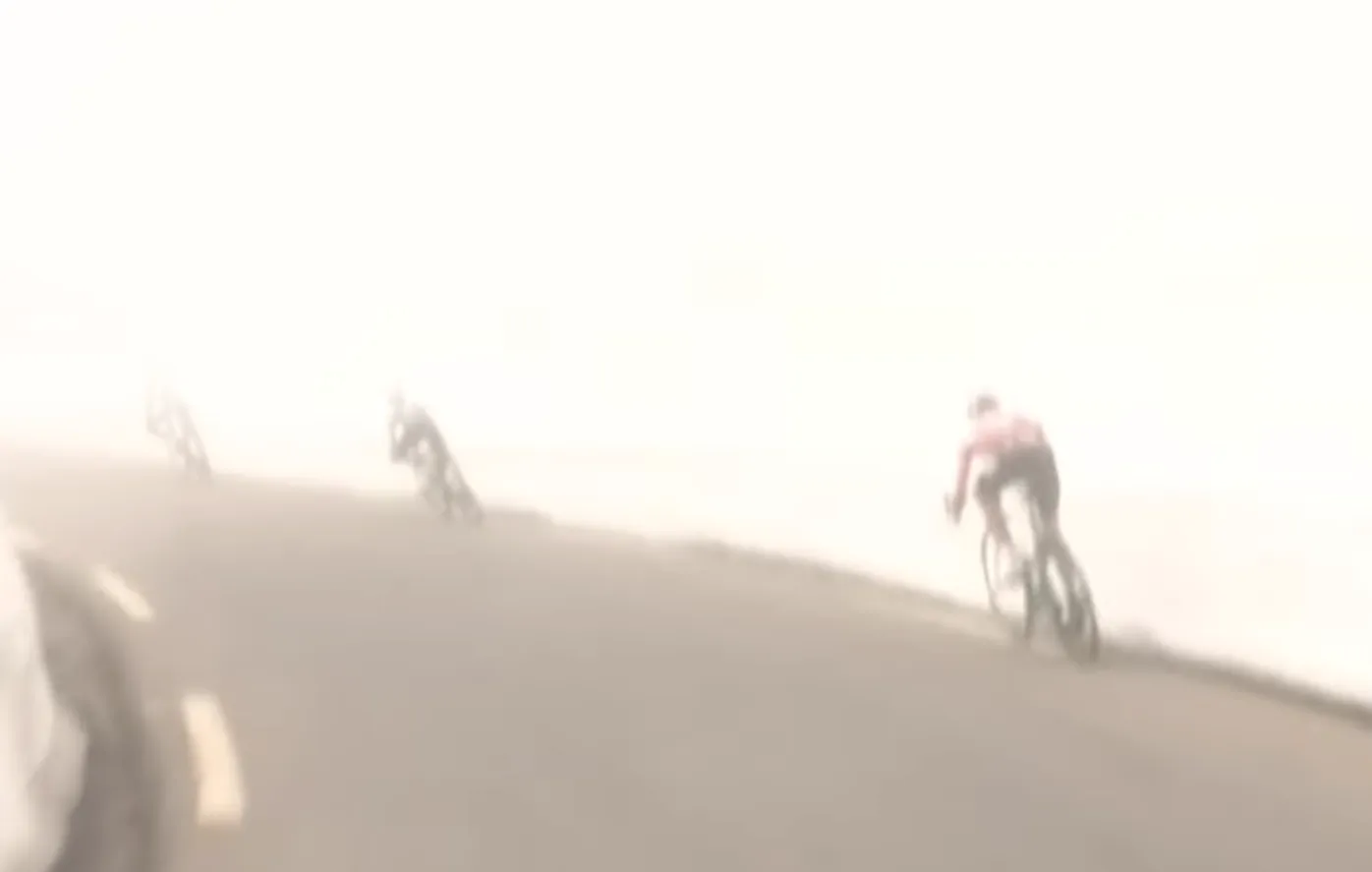
Esteban Chaves has brought his active career to a close. At 35 years old, the Colombian was once the “wonder-kid” of the Grand Tours, yet outside one dazzling year in 2016 he remained somewhat under the radar. Over the past four seasons with EF Education–EasyPost the flame slowly dimmed — even though it lasted longer than perhaps anyone expected.
Even in his final year as a pro there was a faint glimmer of enthusiasm among the crowd when Chaves’s name was announced. The small “climbing goat” was, first and foremost, a pure rider of the mountains — yet over the years he became equally admired for his ever-present smile and pleasant character. Perhaps he was a little too nice for a sport which has grown ever tougher.
If you were fighting tooth and nail for position in the peloton, you’d do well not to count on Chaves: he preferred burying his teeth in a real mountain stage, or a stiff uphill finish. Then the legs would turn and with his 50-odd kilos he didn’t need many watts to ascend at a very high pace. It was this way he also broke through — a genuine climber, the likes of which we rarely see in 2025.
Continue reading below the photo

Chaves was always a welcome rider in the peloton
Chaves saw Steven Kruijswijk crash into the snow-wall
Chaves emerged via the ProContinental circuit with Team Colombia and in 2014 signed a contract with Orica GreenEDGE. It turned out to be an enduring match — not least because of mutual respect, aligned ambitions and hard results. In his first WorldTour season Chaves immediately won a stage in the Tour of California and the Tour de Suisse.
After debuting at the Vuelta a España in 2014 he broke through in 2015 in that year’s third Grand Tour: two stage wins and a 5th place overall. Using the super-compensation from that Spain race he also won the then-end-of-year Abu Dhabi Tour.
Then in 2016 came the next big step. Chaves finished 2nd at the Giro d’Italia — the edition in which Steven Kruijswijk had long looked best, but the Dutchman cracked under pressure from Vincenzo Nibali in a descent: Nibali and Chaves went left around the corner; Kruijswijk ploughed into a wall of snow.
Continue reading below the video
Chaves struggled with “staying upright” and a changed racing world
Following his first Grand Tour podium Chaves stormed ahead in 2016 with a third place in the Vuelta that year and wins in the Giro della Emilia and the Il Lombardia. A future Grand Tour winner seemed born — yet it never quite arrived. In a career that devolved into mainly stage-racing he occasionally gave a glimpse of his superstar potential, but often he did not.
Troubles struck in 2017: a crash in the Giro fractured his shoulder blade. In 2018 he was struck by mono (infectious mononucleosis), meaning after the Giro he didn’t ride the rest of the year. He returned strongly in 2019 with a stage win in the Giro, but then COVID struck the landscape of the sport in 2020.
When 2021 and 2022 brought things back to “normal”, the cards in pro cycling were suddenly entirely reshuffled. Young talent took control, driven by exponential improvements in materials, nutrition, an obsessive focus on watts-per-kilo and being ever-more all-round. Going uphill was faster year after year — and like many others, Chaves simply couldn’t make that next step.
Continue reading below the photo

Chaves kept the smile, despite farewell in obscurity
Although Chaves saw the absolute world-top slip away, we still witnessed him make attempts in recent years. He began 2023 excellently by winning the Colombian national road title — but that turned out to be his final victory in his palmarès. After sixteen seasons of racing he finishes with 17 wins, including five Grand Tour stages, one Monument in Il Lombardia and two Grand Tour podiums.
“Esteban always competed with his trademark smile on his face,” wrote EF Education–EasyPost in a statement. “As he fought for grand tour victories and won stages on the hardest days in those races, he never forgot the humble values and work ethic that he had learned as a boy in Colombia.”
Chaves became a pro at all following a life-threatening crash in 2013 — that in itself was a small miracle. That he got as much out of his career as he did warrants a big compliment. “This is the right decision. I am proud of the career I have had and happy that I now close this chapter.”
The Vuelta a España proved to be his last race — Chaves abandoned after twelve days following a crash.
Read also
IDL-productions
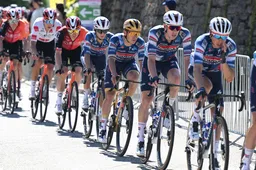
Soudal Quick-Step sees Evenepoel leave to Red Bull, so how sure is a successful 2026 for the team?
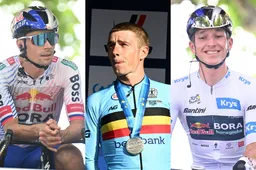
The debate about Red Bull-BORA-hansgrohe’s current leaders and Evenepoel is almost laughable after 2025
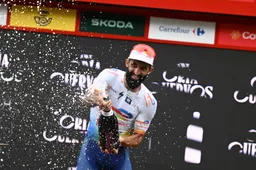
Kuss crashed, but then the story emerged of an eternal lead-out that made the impossible possible
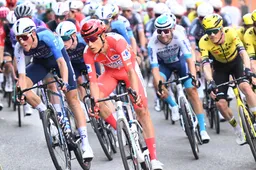
Not nearly as victorious as it sounds: Bahrain Victorious will slowly but surely need to start worrying
Latest Cycling News

Cycling news at your fingertips: Follow IDL Procycling everywhere!

Why Attila Valter left Visma | Lease a Bike – and what Cian Uijtdebroeks found at Movistar

🎥 Mathieu van der Poel stars once again in a new video — and above all: the 100,000 likes are in!

Soudal Quick-Step sees Evenepoel leave to Red Bull, so how sure is a successful 2026 for the team?
Popular Cycling News

🎥 Mathieu van der Poel stars once again in a new video — and above all: the 100,000 likes are in!
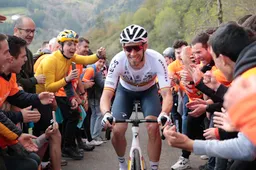
INEOS-Spaniard denied opportunity for his desired farewell: 'Cycling today is very inhuman'

The debate about Red Bull-BORA-hansgrohe’s current leaders and Evenepoel is almost laughable after 2025
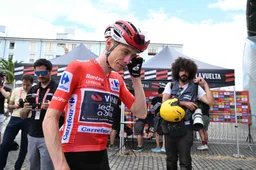
Vingegaard reacts to fierce criticism from compatriot Pedersen: "Maybe that wasn't so smart"
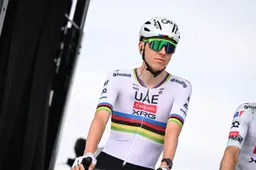
What's the secret behind Pogacar's next level dominance in 2025? 'Now I understand how important it is'
Latest Comments
- Pidcock could follow everyone but Pogi while finishing 3rd. No second place rider this season😃Veganpotter16-11-2025
- Now the Palestinian protestors can stop their whining. Trump came to the rescue. So they can now STFU and go back to waving the rainbow flags.raufus15-10-2025
- Cracked the code lol. If it was that easy to 'crack the code' jonny Vegas would be charging up the Kwaremont giving Pog a dose of his medicine. Evenepoel can't match pog on a climb and neither can mvdp. Anything with a half difficult climb and Pog smashes the field. Even on flat(ish)parcours like Roubaix it came down to a mistake and crash by pog to definitively crown mvdp. MSR is the only one that Pog probably won't win.kevpt10-10-2025
- We've seen this movie before. I think Pogacar is doping.DeadBlow10-10-2025
- 👍Bea08-10-2025
- 👌🏻Bea08-10-2025
- What the data doesn't show is how much of an effect drafting had for evenepoel. Pogacar went with del toro at 100km whilst Evenepoel was still in the bunch. Despite the bike changes he still had a lot of assistance getting back to the bunch. Pogacar then rode 60km solo whilst evenepoel rode with Healy/Skjelmose until going solo in thd last 10-15km. Thats ~20% less power / energy requirements for 45-50km. Apples and oranges...kevpt30-09-2025
- 👏👏Bea24-09-2025
- Agreed! As we all know now, Juan Ayuso will be on another team. But it was sweet to see him win the stages at La Vuelta. I do love the drama of cycling admittedly but its clear to see the talent of winners of stages in a Grand Tourryhw2814fq921-09-2025
- Pogacar has no competition he has won everything, I cant imagine even being him in that position!! Crazy. I am sure he has some back up plan for how he wants to spend his retirement years at age 30 onward. Does he like beer? Plenty of innovation in brewing. And you don't have to be super social. Chapeau/Cheers whatever you like Tadej you will do.ryhw2814fq921-09-2025
Loading
